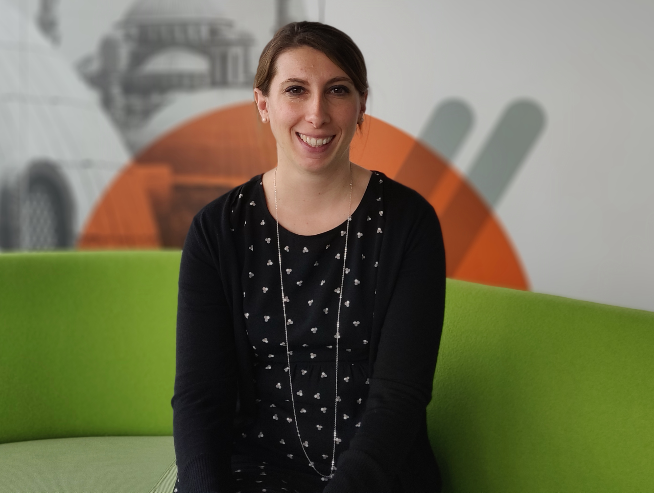“It’s an opportunity to better understand our customers’ reality, to find out what they want and what they expect” Claire explains what is NPS

For a long time, a company’s primary focus in terms of development was product and product quality – but now things have changed. It’s the customer experience that counts. The NPS (Net Promoter Score & System) & Customer Advocacy programme means that BNP Paribas Personal Finance has put the human element right back at the centre of its operational and business focus again. This is because the mechanism lets us use feedback from customers and partners to improve our understanding of their expectations and thus continually improve their experience with us.
Claire Osmalek, who manages the programme, tells us more about its development, challenges and ambitions.
Please can you introduce yourself?
My name is Claire Osmalek, and I joined BNP Paribas Personal Finance in October 2014. In February 2018 I was appointed to a central role in the Sales and Marketing department, where I was put in charge of the NPS and Customer Advocacy programme.
What exactly is the NPS & Customer Advocacy programme?
It’s an ambitious, truly defining project for the whole BNP Paribas Group. It was launched in June 2017, with BNP Paribas Personal Finance as the first department to implement it, as part of our strategic plan for 2020.
The NPS stands for both Net Promoter Score and Net Promoter System.
The Net Promoter Score is the final indicator that tells us to what extent our customers or partners would recommend us, through a scoring system. We combined the NPS with our Customer Advocacy Programme because the aim is to change how BNP Paribas Personal Finance works, in order to make its activities more customer-focused. The voice of the customer must always be heard throughout the organisation, so that we can change our working methods and develop our products and services.
The Net Promoter System is the method we use to improve our processes.
It consists of 4 components:
- The first is measuring and monitoring customer opinion. Its aim is to listen to our customers and find out their opinions. To this end, we conduct various surveys at key moments (for example, at the end of a registration process) that regularly measure what our customers think; but we also collect reviews left spontaneously by customers on social media, blogs & forums.
- The second is what’s called the “Feedback Loop”. Once we get the surveys back, we look at the scores. Customers who put between 0 and 6 are seen as detractors, between 7 and 8 are seen as being passive, and if they put 9 or 10 it means they’re not just satisfied but that they’re likely to recommend us. The priority is to target all detractors, call them quickly once we get their surveys back – in less than 48 hours if possible – and try to find out why they gave us such a poor score. Ultimately, the objective is to call up all categories of customer proactively and find out what they find frustrating, and what their needs and expectations are, so that eventually we can exceed their expectations.
- The third component is the action plan. Based on what we have learnt from our customers, using the surveys and the feedback loop, we conduct an initial analysis and as a result write related action plans to improve our systems, processes or products, for example. The action plans are then circulated internally so that everyone knows exactly what changes need to be made in order to improve the customer experience.
- The fourth and final component is commitment. If we really want to be customer-focused, every single employee must be aware of and committed to this approach.
To sum up – we listen, we learn, we act, and we ask the whole company to be fully engaged with the process.
What challenges do businesses in general – and BNP Paribas Personal Finance in particular – face today?
It’s all about transformation. We can see that our customers have a different mindset nowadays. Today, what they care about and what makes them come back is the customer experience. If we can make the whole experience as smooth and easy as possible, they’ll come back to us and they’ll transmit a positive image of our company, which may help us acquire more customers.
Where has the programme been introduced so far?
There are currently 24 different countries involved – it’s a major challenge! We’re working hand in hand with all these countries to make sure that the NPS and Customer Advocacy Programme is implemented both fully and at a rate each country is able to handle.
What does this NPS actually bring to a company?
It’s an opportunity to better understand our customers’ reality, to find out what they want and what they expect. It means that BNP Paribas Personal Finance can learn to work transversally and reminds all company employees that customers are everyone’s business. It’s a way of giving value to the human aspect and making it central to our processes once again.
Can you describe the mechanism in a nutshell?
It’s a truly essential strategy, and I personally find it very motivating to focus on the customer, who is, after all, the very heart of our business.







![[Podcast On The Way] Thomas Koell – Les Biens en Commun : Sharing to change the way we consume](https://personal-finance.bnpparibas/app/uploads/sites/4/2025/04/les-biens-en-commun_banner-386x386.jpeg?1745317444)

![[Podcast On The Way] Benjamin Martinie – Hourrail: Transforming our travel patterns for a more sustainable future](https://personal-finance.bnpparibas/app/uploads/sites/4/2025/04/moving-train-in-mountains-at-sunset-in-autumn-2024-12-03-22-23-56-utc-386x386.jpg?1745316261)